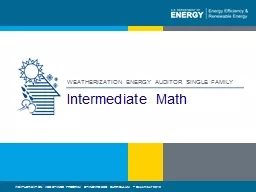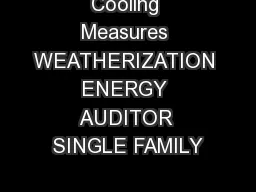PPT-Intermediate Math WEATHERIZATION ENERGY AUDITOR SINGLE FAMILY
Author : min-jolicoeur | Published Date : 2020-04-05
WEATHERIZATION ASSISTANCE PROGRAM STANDARDIZED CURRICULUM December 2012 By attending this session participants will be able to Apply units of measurement Calculate
Presentation Embed Code
Download Presentation
Download Presentation The PPT/PDF document " Intermediate Math WEATHERIZATION ENERGY..." is the property of its rightful owner. Permission is granted to download and print the materials on this website for personal, non-commercial use only, and to display it on your personal computer provided you do not modify the materials and that you retain all copyright notices contained in the materials. By downloading content from our website, you accept the terms of this agreement.
Intermediate Math WEATHERIZATION ENERGY AUDITOR SINGLE FAMILY: Transcript
Download Rules Of Document
" Intermediate Math WEATHERIZATION ENERGY AUDITOR SINGLE FAMILY"The content belongs to its owner. You may download and print it for personal use, without modification, and keep all copyright notices. By downloading, you agree to these terms.
Related Documents














